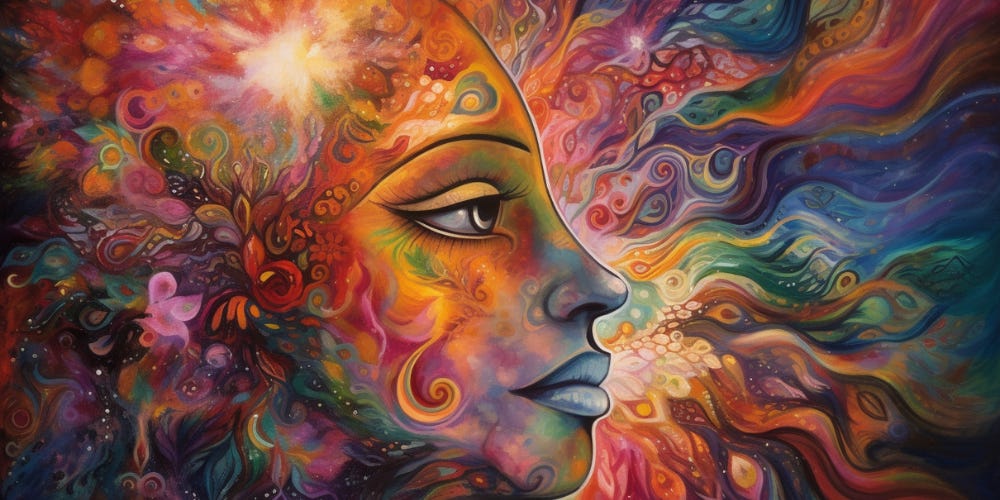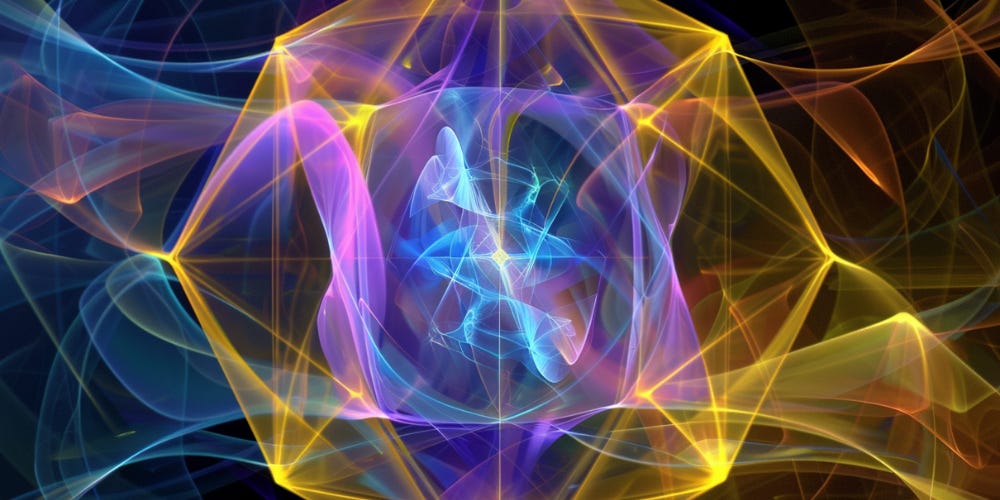Join me on this exploration as I discover that the self is so much more than a distinct, singular being that I call “Me”.
This is part two of the Container Series (you can find parts 1 and 1.5 here) where we take a deep look at the forces that hold us. If you’re new here, please check out the About Page to find out more about this magical space. My work depends entirely on subscribers, so please sign up! And my heartfelt gratitude goes out to those already subscribed. Let’s keep building this amazing community of magic together!
In some of my previous posts, I’ve mentioned my belief that we are collectively moving towards a more relational way of being. This idea is something my guides have shown me time and again. As with most things, however, it tends to lead me to more questions than answers.
Thinking about a more relational way of being made me really curious about the entities that are doing the relating. What is this “I”—this self—that facilitates connection? In my exploration, I discovered that I had to open to the possibility that the self is actually not a single, distinct being at all.
What are we really made of?
The first thing I pondered, when looking into the self, was the body.
From energy particles to atoms, elements to molecules, we are made up of various components. Our bodies consist of over 30 trillion cells of different types, such as muscle cells, skin cells, and organ cells. Additionally, we are teeming with microbes such as viruses, bacteria, mites, and parasites. This realization alone lead me to see myself as a collective of entities rather than a singular being.
When I then considered that the atoms and molecules that make up our physical selves were once part of another physical self, it blurred the lines between self and other even further. One of my favorite writers on Substack,
, has a wonderful weekly series that examines the Walt Whitman poem, “Song of Myself.” In the first installment, he included this quote that illustrates the point beautifully:“At every level of our being, we are incessantly transferring and exchanging materials, ideas, emotions, affections. The atoms that yesterday composed a living cow or growing plant, today are part of us, as the eternal atoms of the universe continue their nonstop interaction and rearrangement.”1
Even the atoms that make up our bodies are not truly “ours”.
What are we beyond our bodies?
Because so much of my work is in the field of mysticism, I turned to my guides again and asked them to tell me what they know on the concept of self. One of the really cool things they told me is that every single one of these bits that come together to make up our body also has its own consciousness. It really does. Every piece of it has its own life plan and life span. It's time for us to stretch beyond the human-centric belief that we're the only ones with consciousness, or that we have more of it. Consciousness is consciousness, and every single thing—from the quantum to macroscopic scale—is infused with it, expressing it in myriad ways.
My guides showed me that we are each made up of our own personal histories, memories and thoughts that, yes, have consciousness too. And, if that wasn't enough, we are also made up of the consciousness of our ancestors and the consciousness of the organism that is the human species.
Even more, we are made of the consciousness of everything else that flows through our energy fields like archetypal patterns, cosmic laws, deities and other divine powers, as well as the energy of the Earth itself.
Then my guides led me to a fascinating article written in 1950 by an anthropologist and philosopher named Dorothy Lee titled, “The Conception of the Self Among the Wintu Indians.” The Wintu are a tribe of Native Americans from what is now called Northern California. As Lee studied these people, she noticed that they way they view the self is vastly different from that of non-indigenous Americans.
This is what Lee had to say (emphasis added):
The Wintu conceive of the self not as strictly delimited or defined, but as a concentration, at most, which gradually fades and gives place to the other. Most of what is other for us, is for the Wintu completely or partially or upon occasion, identified with the self.
The Wintu conception of the self then differs from our own in that it contains the total person and the activities of all its aspects, and in that it fades out gradually and without distinct demarcation. It is not clearly opposed to the other, neither is it clearly identical with or incorporated in the other. On most occasions it participates to some extent in the other, and is of equal status to the other; where we see a one way relationship from self to other, an assertion of the self upon the other, the Wintu see a coordinate togetherness, with, at most, a stressed point of view.2
After all that exploration, here’s the way I’ve come to understand the container of self:
We are collectives. We are concentrations and configurations of parts. We are collaborations and harmonies. We are not single entities. What appears to be this single being is, in actuality, a container for the relationships among a vast number of entities.
It is no stretch to say: We are relationship itself.
By viewing ourselves as living embodiments of relationship, we can better understand how to nurture our Container of Self. We can learn to actively listen to all aspects of ourselves and intentionally seek alignment. We can also begin to acknowledge that the idea of "other" is more ambiguous, more nuanced, than we might have thought.
When we start to view ourselves this way, it can shift the way we communicate and respond. We can become more cognizant of our own needs and desires, as well as those of others. This awareness can lead to more compassion and empathy all around.
I know it’s a huge topic, but I’d love to hear how you define the Self. Let me know in the comments below.
Here is the next installment of The Container Series:
https://iwp.uiowa.edu/whitmanweb/en/writings/song-of-myself/section-1 Ed Folsom, editor of Walt Whitman Quarterly Review
Lee, D. (1950). Notes on the conception of the self among the Wintu Indians. The Journal of Abnormal and Social Psychology, 45(3), 538–543. https://doi.org/10.1037/h0054672






This is a fascinating post, Jenna, and thank you so much for the mention - there is a lot of synchronicity with Song of Myself. But I am really taken with the idea that "inanimate" objects in fact to have consciousness, and even just a moment of thought about it reveals that all the atoms and molecules of our own brains and consciousness and self are participating in our "selves" in an amazing dance. So much we just don't know, so great to keep our minds open... 💛🧡🩷
I think it's such a fascinating topic! It's so curious to think that we have little beings (cells) inside of us, and that they're conscious. It's like we are a big living environment, living in an even bigger environment (Earth), living in an even bigger one (Universe), and so on. The thought of having living thingies inside of me makes me want to take care of my health even more - we all need it. Great article! Thought-provoking!